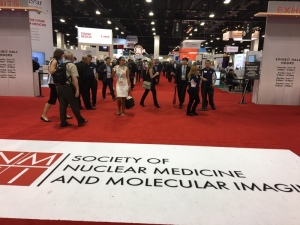Heart disease second leading cause of death for cancer survivors
by John W. Mitchell, Senior Correspondent | June 20, 2017
Cardiology
Molecular Imaging

In a cruel twist, cancer and its treatment mean that survivors often must contend with the risk of cardiac disease.
This, according to a presentation titled "The Role of Nuclear Cardiology in Center of Excellence" Tuesday at the annual SNMMI meeting convened in Denver this week.
“Sometimes it seems cancer and heart disease coexist in a race to kill cancer survivors,” Dr. Ronald Schwartz, director of Nuclear Cardiology and Cardiac PET/CT at the Paul N. Yu Heart Center and Science Park at the University of Rochester Medical Center, told HCB News.

 According to 2012 data from the National Health and Nutrition Examination Surveys presented by Schwartz, 51 percent of initial cancer survivors eventually die from their cancer. The second leading cause of death among the group – 33 percent – died from heart disease.
According to 2012 data from the National Health and Nutrition Examination Surveys presented by Schwartz, 51 percent of initial cancer survivors eventually die from their cancer. The second leading cause of death among the group – 33 percent – died from heart disease.
Schwartz was one of three panel members who made the presentation. The other two members were Italian nuclear cardiologist Wanda Acampa, M.D., Ph.D. and Prem Soman, M.D., Ph.D., a Pittsburg area nuclear cardiologist. The three said that heart failure is a threat to patients who have a comorbid heart disease when they get cancer. Also, their heart disease can become onset, related to their oncology treatments. They advocated that a strong nuclear cardiac program to enable cardiologists to study and follow cancer patients is a vital component of their survivability.
According to a 2016 paper published in the Journal Circulation, cardiovascular disease (CVD) and cancer are the two leading causes of death worldwide. The researchers found that the two diseases “possess various similarities and possible interactions” that contribute to emerging evidence of a shared biology.
The authors concluded that: “Therapeutic advances, despite improving longevity, have increased the overlap between these diseases, with millions of cancer survivors now at risk of developing CVD.”
The main takeaway points from the SNMMI presentation – which was highly technical – were:
- Cardio-oncology must be part of comprehensive cancer care and be patient-centered.
- Nuclear cardiology studies can effectively detect cardiotoxicity, prevent congestive heart failure, and evaluate myocardial perfusion and ischemic risk in patients with cancer.
- Radionuclide studies may provide additional information to manage specific cancer-related issues, including infiltrative disease (amyloid, sarcoid), and infections.
- PET/CT has provided insights into the pathophysiological role of coronary microvascular disease among cancer survivors.
- Assessment of coronary microvascular function has gained increasing popularity in the clinical setting, both for diagnostic purposes and for the evaluation of therapeutic interventions.
- The coronary microvasculature cannot be managed in vivo. But different invasive and noninvasive techniques can be used to assess functional parameters.
This, according to a presentation titled "The Role of Nuclear Cardiology in Center of Excellence" Tuesday at the annual SNMMI meeting convened in Denver this week.
“Sometimes it seems cancer and heart disease coexist in a race to kill cancer survivors,” Dr. Ronald Schwartz, director of Nuclear Cardiology and Cardiac PET/CT at the Paul N. Yu Heart Center and Science Park at the University of Rochester Medical Center, told HCB News.
Your Trusted Source for Sony Medical Displays, Printers & More!
Ampronix, a Top Master Distributor for Sony Medical, provides Sales, Service & Exchanges for Sony Surgical Displays, Printers, & More. Rely on Us for Expert Support Tailored to Your Needs. Email info@ampronix.com or Call 949-273-8000 for Premier Pricing.

Schwartz was one of three panel members who made the presentation. The other two members were Italian nuclear cardiologist Wanda Acampa, M.D., Ph.D. and Prem Soman, M.D., Ph.D., a Pittsburg area nuclear cardiologist. The three said that heart failure is a threat to patients who have a comorbid heart disease when they get cancer. Also, their heart disease can become onset, related to their oncology treatments. They advocated that a strong nuclear cardiac program to enable cardiologists to study and follow cancer patients is a vital component of their survivability.
According to a 2016 paper published in the Journal Circulation, cardiovascular disease (CVD) and cancer are the two leading causes of death worldwide. The researchers found that the two diseases “possess various similarities and possible interactions” that contribute to emerging evidence of a shared biology.
The authors concluded that: “Therapeutic advances, despite improving longevity, have increased the overlap between these diseases, with millions of cancer survivors now at risk of developing CVD.”
The main takeaway points from the SNMMI presentation – which was highly technical – were:
- Cardio-oncology must be part of comprehensive cancer care and be patient-centered.
- Nuclear cardiology studies can effectively detect cardiotoxicity, prevent congestive heart failure, and evaluate myocardial perfusion and ischemic risk in patients with cancer.
- Radionuclide studies may provide additional information to manage specific cancer-related issues, including infiltrative disease (amyloid, sarcoid), and infections.
- PET/CT has provided insights into the pathophysiological role of coronary microvascular disease among cancer survivors.
- Assessment of coronary microvascular function has gained increasing popularity in the clinical setting, both for diagnostic purposes and for the evaluation of therapeutic interventions.
- The coronary microvasculature cannot be managed in vivo. But different invasive and noninvasive techniques can be used to assess functional parameters.
You Must Be Logged In To Post A CommentRegisterRegistration is Free and Easy. Enjoy the benefits of The World's Leading New & Used Medical Equipment Marketplace. Register Now! |
|










